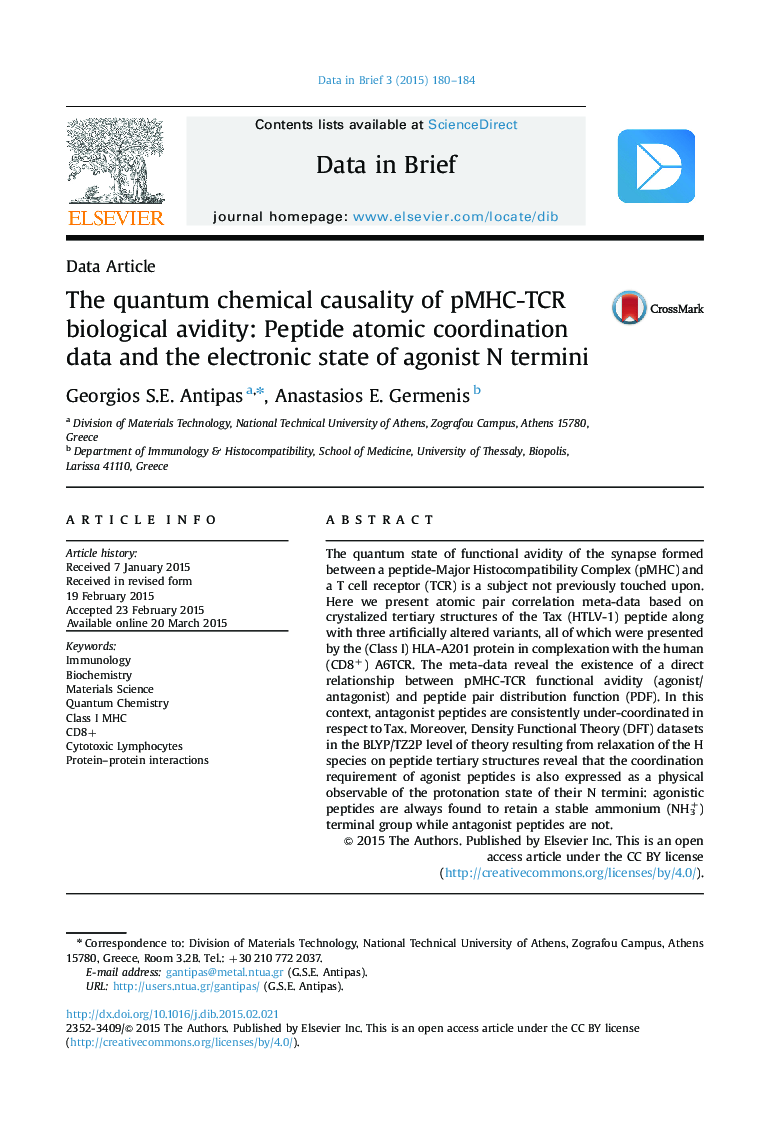| Article ID | Journal | Published Year | Pages | File Type |
|---|---|---|---|---|
| 175207 | Data in Brief | 2015 | 5 Pages |
The quantum state of functional avidity of the synapse formed between a peptide-Major Histocompatibility Complex (pMHC) and a T cell receptor (TCR) is a subject not previously touched upon. Here we present atomic pair correlation meta-data based on crystalized tertiary structures of the Tax (HTLV-1) peptide along with three artificially altered variants, all of which were presented by the (Class I) HLA-A201 protein in complexation with the human (CD8+) A6TCR. The meta-data reveal the existence of a direct relationship between pMHC-TCR functional avidity (agonist/antagonist) and peptide pair distribution function (PDF). In this context, antagonist peptides are consistently under-coordinated in respect to Tax. Moreover, Density Functional Theory (DFT) datasets in the BLYP/TZ2P level of theory resulting from relaxation of the H species on peptide tertiary structures reveal that the coordination requirement of agonist peptides is also expressed as a physical observable of the protonation state of their N termini: agonistic peptides are always found to retain a stable ammonium (NH3+) terminal group while antagonist peptides are not.
